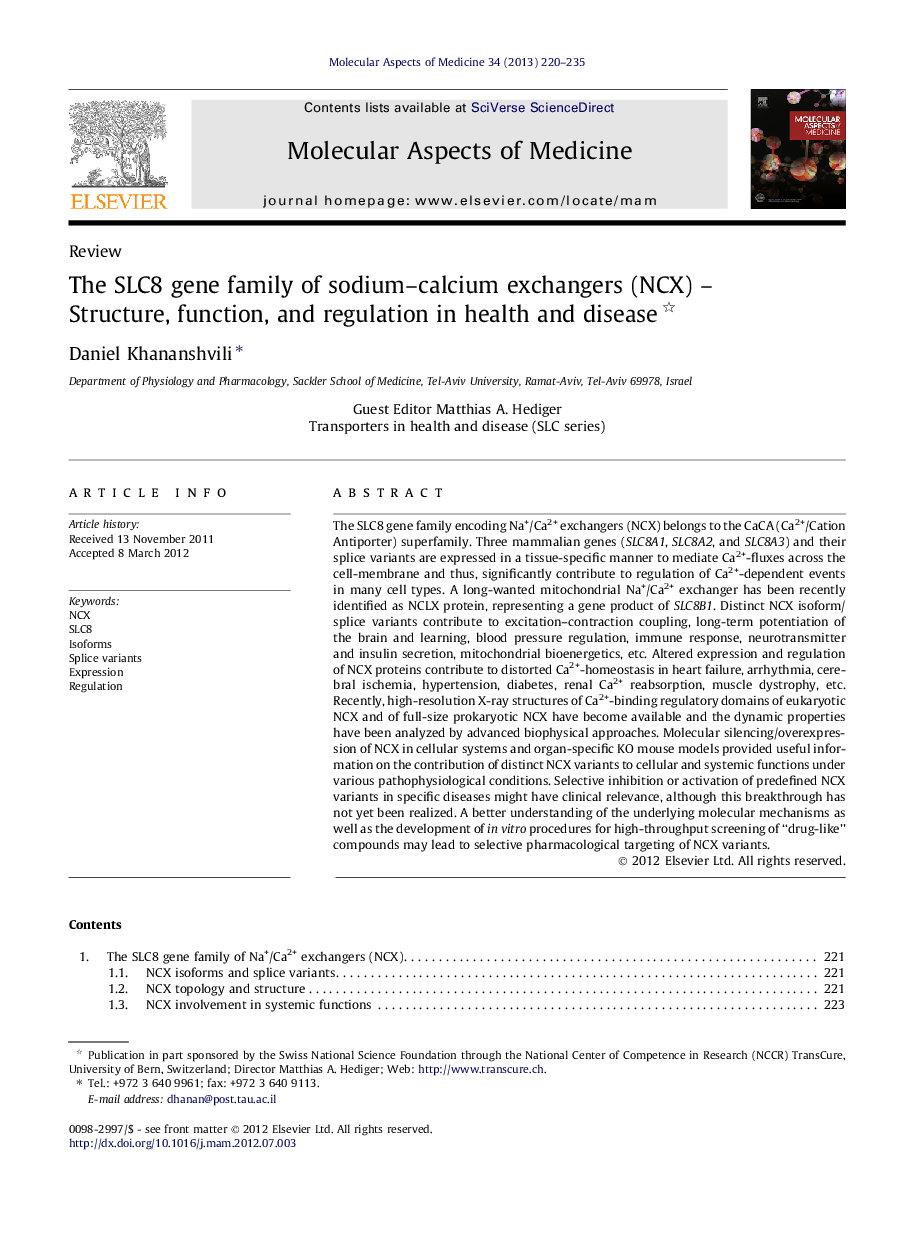| Article ID | Journal | Published Year | Pages | File Type |
|---|---|---|---|---|
| 8341514 | Molecular Aspects of Medicine | 2013 | 16 Pages |
Abstract
The SLC8 gene family encoding Na+/Ca2+ exchangers (NCX) belongs to the CaCA (Ca2+/Cation Antiporter) superfamily. Three mammalian genes (SLC8A1, SLC8A2, and SLC8A3) and their splice variants are expressed in a tissue-specific manner to mediate Ca2+-fluxes across the cell-membrane and thus, significantly contribute to regulation of Ca2+-dependent events in many cell types. A long-wanted mitochondrial Na+/Ca2+ exchanger has been recently identified as NCLX protein, representing a gene product of SLC8B1. Distinct NCX isoform/splice variants contribute to excitation-contraction coupling, long-term potentiation of the brain and learning, blood pressure regulation, immune response, neurotransmitter and insulin secretion, mitochondrial bioenergetics, etc. Altered expression and regulation of NCX proteins contribute to distorted Ca2+-homeostasis in heart failure, arrhythmia, cerebral ischemia, hypertension, diabetes, renal Ca2+ reabsorption, muscle dystrophy, etc. Recently, high-resolution X-ray structures of Ca2+-binding regulatory domains of eukaryotic NCX and of full-size prokaryotic NCX have become available and the dynamic properties have been analyzed by advanced biophysical approaches. Molecular silencing/overexpression of NCX in cellular systems and organ-specific KO mouse models provided useful information on the contribution of distinct NCX variants to cellular and systemic functions under various pathophysiological conditions. Selective inhibition or activation of predefined NCX variants in specific diseases might have clinical relevance, although this breakthrough has not yet been realized. A better understanding of the underlying molecular mechanisms as well as the development of in vitro procedures for high-throughput screening of “drug-like” compounds may lead to selective pharmacological targeting of NCX variants.
Related Topics
Life Sciences
Biochemistry, Genetics and Molecular Biology
Biochemistry
Authors
Daniel Khananshvili,
